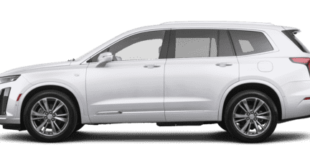The redesigned 2021 Nissan Rogue prioritizes creature comforts and standard safety features. The 2021 Honda CR-V soldiers on with good fuel economy and a reputation for roominess.
Neither one of these compact crossover SUVs excites the heart, but they do appease the budget. Neither attractive nor ugly, they diverge mainly under the hood, with Honda offering a hybrid or a turbo-4, and the Rogue keeping on with a larger 2.5-liter inline-4.
Updates to the Rogue load it with a larger touchscreen and standard smartphone compatibility, and more premium options take it to a level above the CR-V. But the 2021 Rogue starts at about $ 500 more than the CR-V and has a broader price spectrum.
These off-setting traits result in a virtual deadlock, but the 2021 Honda CR-V edges the 2021 Nissan Rogue by the narrowest of margins, with a TCC Rating of 6.5 compared to 6.4 for the Rogue. (Read more about how we rate cars.) But once official crash-test results are in and we ascribe a safety rating to the redesigned Rogue, the total score should rise above the CR-V. Here’s a detailed breakdown.

2021 Honda CR-V (CR-V Hybrid)
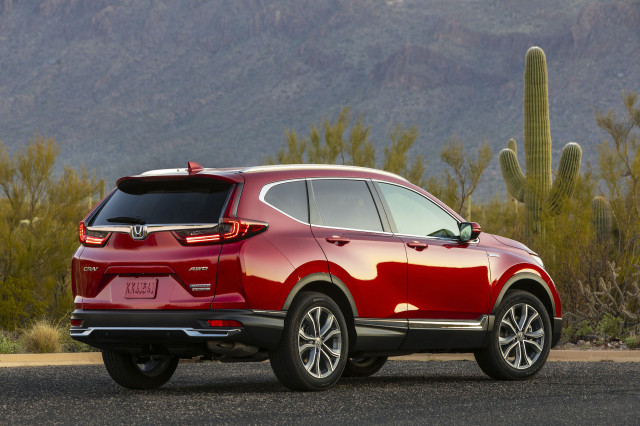
2021 Honda CR-V (CR-V Hybrid)
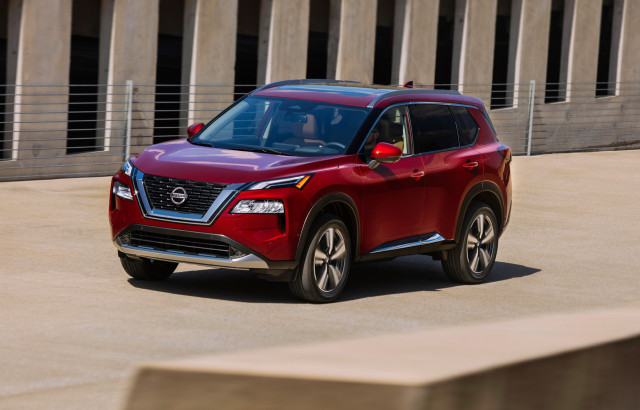
2021 Nissan Rogue
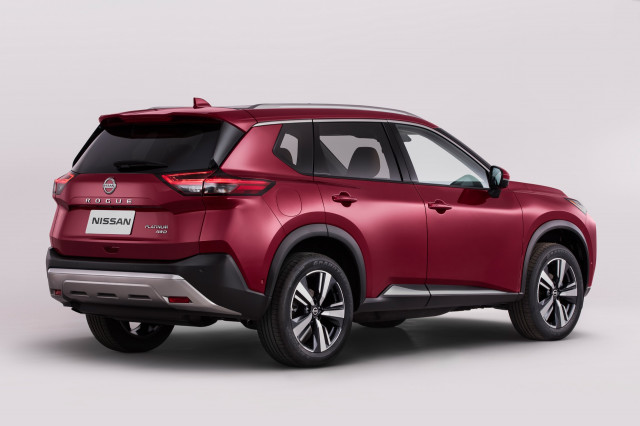
2021 Nissan Rogue
Style and performance
From the side view alone, it might be hard to tell them apart. Both have rounded wheel arches housing up to 19-inch wheels, and tasteful black cladding trims the rockers and bumpers. Integrated rear roof spoilers and wrap around light designs further blend the two. The style deviates up front, with Nissan going from dull to daring with the Rogue’s LED headlights split from its narrow daytime running lights. The grille is bigger and bolder, more truck-like, while the CR-V’s grille looks more integrated and less in your face.
Inside, the Rogue gets the edge with contrasting materials and a layered dash that slaps on nicer elements on higher trims. Even though the CR-V was refreshed for 2020, it still has a gear shifter that eats up precious real estate in the center console. Covered in textured graphite, the Rogue’s streamlined console offers concealed storage beneath it and an armrest console with a butterfly opening so rear passengers can access it. The electronic gear shifter feels flimsy in the Rogue, as do some of the buttons on the bezel of the touchscreen.
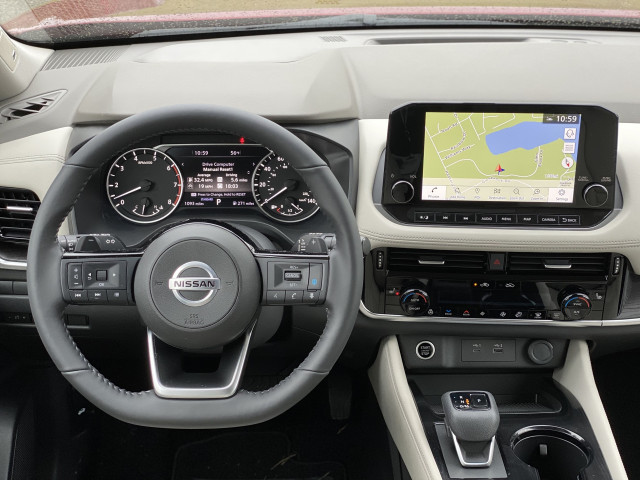
2021 Nissan Rogue
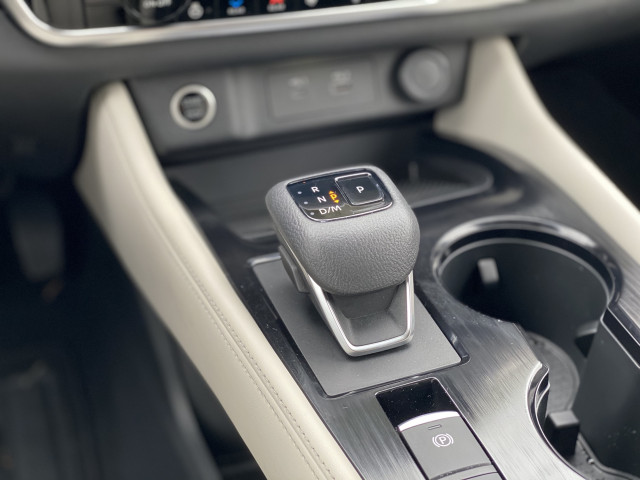
2021 Nissan Rogue
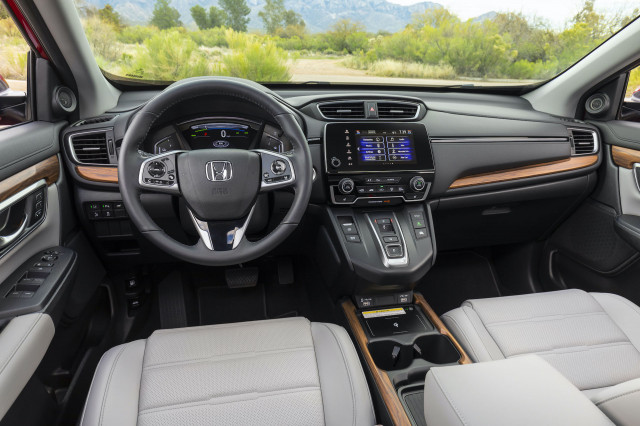
2021 Honda CR-V (CR-V Hybrid)
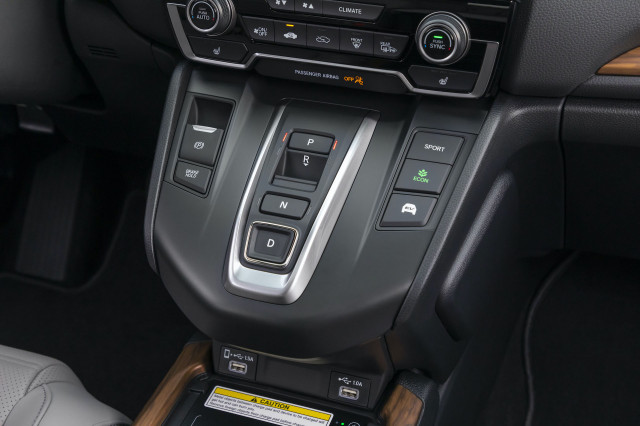
2021 Honda CR-V (CR-V Hybrid)
Both crossovers sport a perfectly average 5 when it comes to performance. Built for comfort not for speed, the 2021 Rogue uses a 181-horsepower 2.5-liter inline-4 paired to a continuously variable automatic transmission (CVT) that simulates up to seven gears when you go heavy on the throttle. Sport mode is the only time you notice the engine, as Nissan reduced engine and road noise in the cabin. A new platform and stiffer chassis with a multi-link rear suspension helps it handle with a bit more agility than the CR-V, even though it’s nearly an inch taller.
All but the base Rogue get an EPA-rated 26 mpg city, 34 highway, 29 combined with front-wheel drive. The 2021 Honda CR-V with a 190-hp 1.5-liter turbo-4 does it one better, at 28/34/30 mpg. Available all-wheel drive trims 1 mpg off both models but adds $ 1,400 on the Rogue and $ 1,500 on the CR-V.
The Honda CR-V’s most competitive advantage over the Rogue is its available hybrid powertrain. The 2021 CR-V hybrid pairs a 2.0-liter inline-4 with two electric motors that makes up to 212 hp. It comes with the same mechanical all-wheel drive system available on the gas model. The automatic stop/start system runs smoother on the hybrid, and it gets 40/35/38 mpg for an upcharge of only $ 1,200 over the all-wheel-drive gas models. The 2021 Ford Escape has a hybrid, and the 2021 RAV4 can be had as a hybrid or a plug-in hybrid. We’ll see if Nissan adds a hybrid option to the Rogue, though it didn’t work out so well in 2017.
Comfort, features, and safety
The battery pack in the CR-V hybrid eats up 6.0 cubic feet of space. Both gas models offer a bit more than 39 cubic feet of cargo volume with the rear seats up, but fold the rear seats down and the CR-V expands to 75.8 cubic feet compared to 74.1 cubes in the Rogue. A tiered load floor and deep storage pockets add some storage versatility in the Rogue. The CR-V’s rear seats are roomier, too, with more than 40 inches of rear leg room compared to 36.8 inches in the Rogue, and the CR-V has a wide and low floor. The CR-V might be better for older passengers, but the Rogue’s rear doors can open 90 degrees, which makes it easier to load child safety seats.

2021 Nissan Rogue Platinum

2021 Nissan Rogue Platinum

2021 Nissan Rogue Platinum
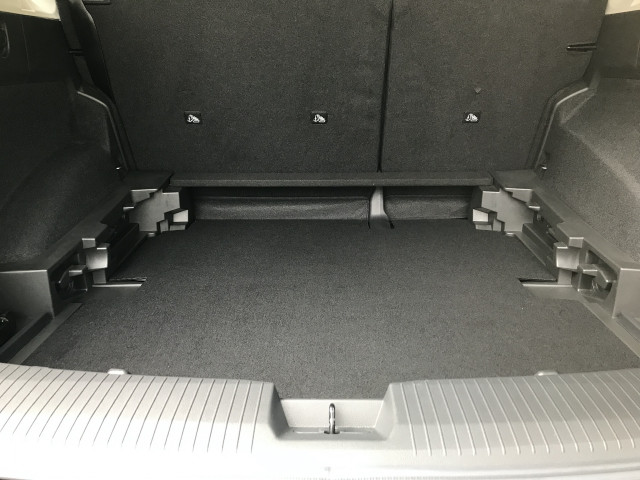
2021 Nissan Rogue Platinum
The biggest separation between these two compact crossovers comes in the standard features offered on the base models. Both start with 17-inch wheels, power features, a USB port, and cloth seats. But the CR-V’s 5.0-inch display screen and basic features on LX pale in comparison to the Rogue’s standard 8.0-inch touchscreen with Apple CarPlay and Android Auto compatibility on base S trim.
The gap narrows with the CR-V EX and the Rogue SV, but the Rogue stretches its premium legs with options that aren’t even offered on the CR-V such as a dual sunroof, 10.8-inch head-up display, 12.3-inch digital instrument cluster, 9.0-inch touchscreen, quilted semi-aniline leather seats, heated rear seats, and wireless Apple CarPlay, among others.
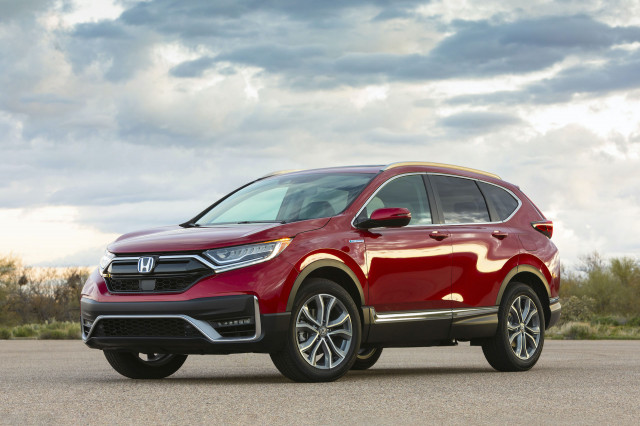
2021 Honda CR-V (CR-V Hybrid)
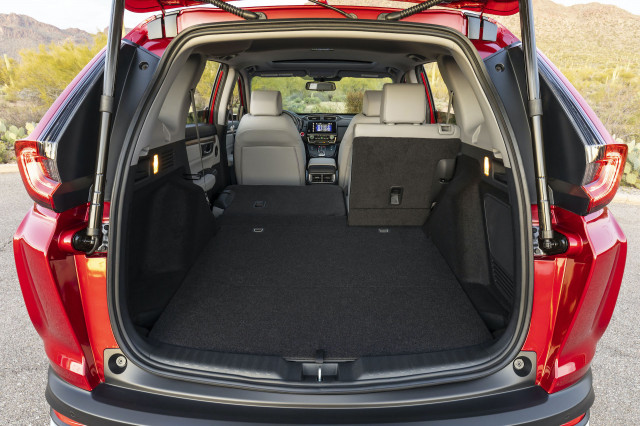
2021 Honda CR-V (CR-V Hybrid)
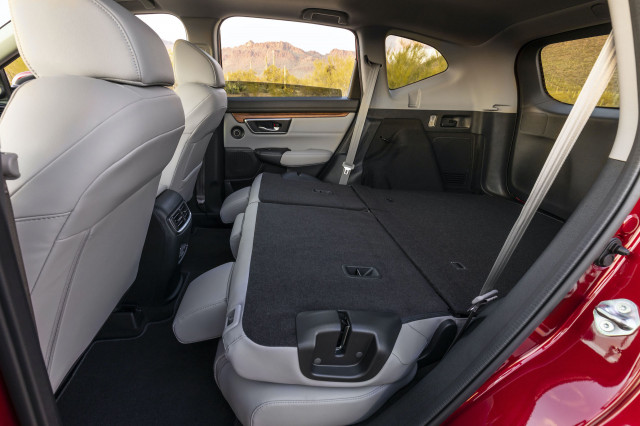
2021 Honda CR-V (CR-V Hybrid)
But back to those base features: The 2021 Nissan Rogue comes with more standard safety features, including rear door alert, automatic emergency braking with pedestrian detection, active lane control, automatic high beams, blind-spot monitors with rear cross-traffic alert, and automatic rear braking. Adaptive cruise control is optional on the Rogue, whereas Honda makes it standard along with automatic emergency braking, and active lane control. The 2021 CR-V earned a five-star crash rating from the NHTSA, and a Top Safety Pick award from the IIHS on top Touring trims. The redesigned Rogue has yet to be crash tested.
The similarities between these two models could make a tough but good choice for consumers. The Rogue comes with more standard convenience and safety features, while the CR-V offers a bit more space for rear passengers. If fuel economy is the top concern, the 2021 Honda CR-V hybrid answers the call.
